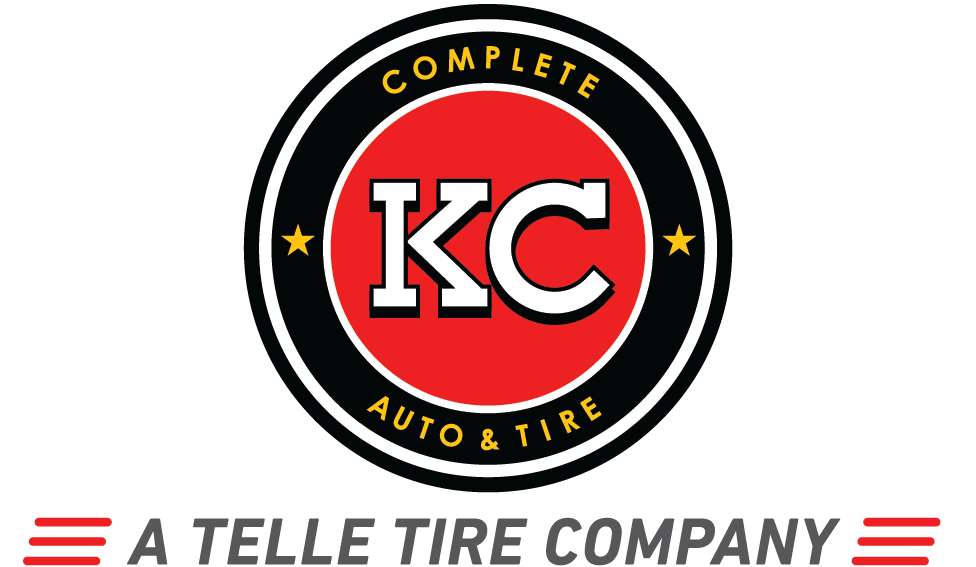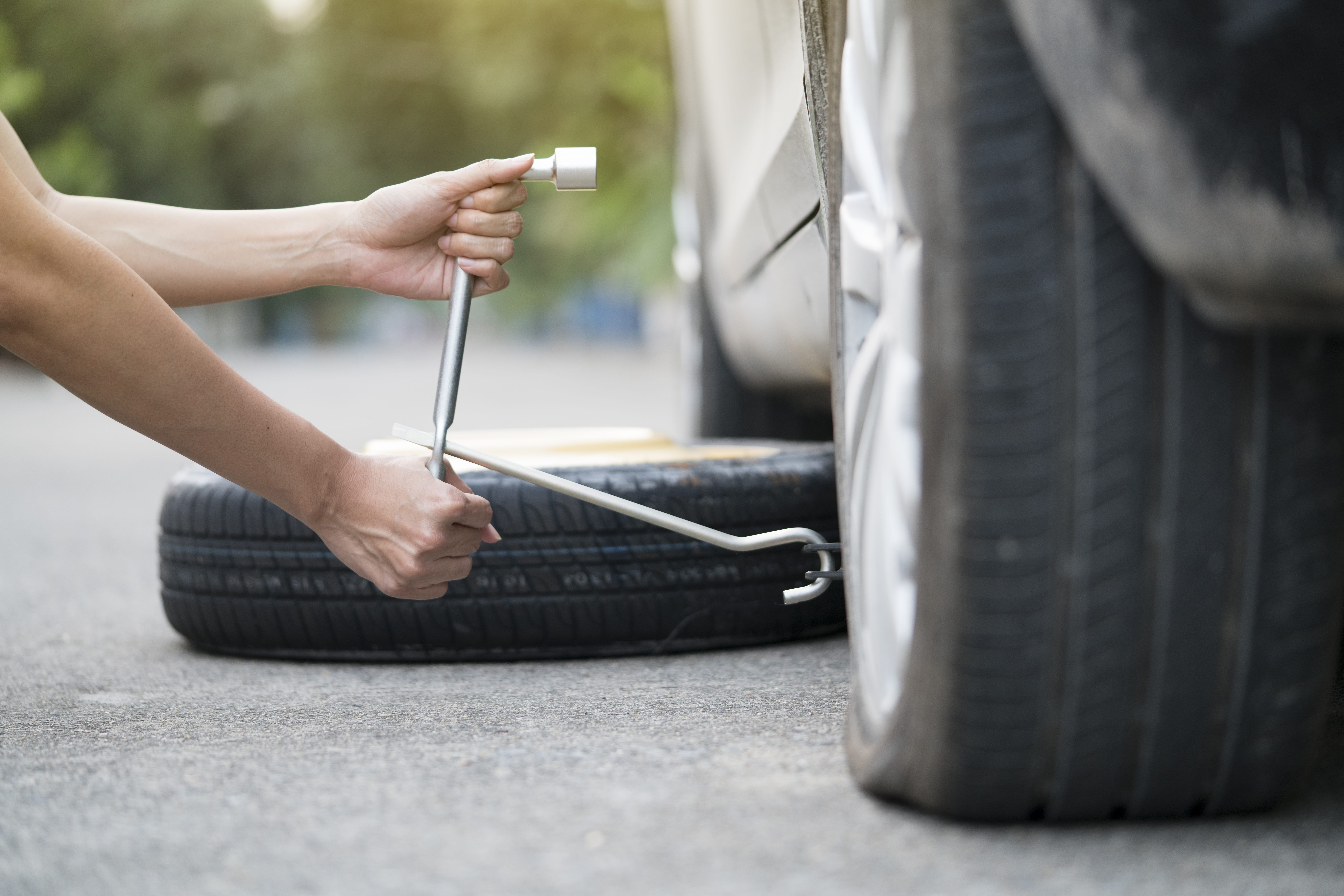How to Change a Tire
Flats happen. Knowing exactly what to do when you get a flat tire or if you experience a tire blowout is the best way to get through the inconvenience quickly and efficiently. At Telle Tire, we’re dedicated to keeping you safe on the road, so we put together a step-by-step guide on how to change a tire.
It’s important to note that you should always pull your vehicle into a safe environment to change a car tire. Never put yourself in a situation where you might be struck by another vehicle.
A Step-By-Step Guide to Changing a Tire
1. Secure Your Vehicle
First and foremost, get your vehicle to a safe location. Driving any amount of distance on a flat tire is not recommended as it can damage your rim or your TPMS sensor. However, if you’re in a busy intersection or on the highway, drive extremely slowly with your hazards on to park your car in a safe location.
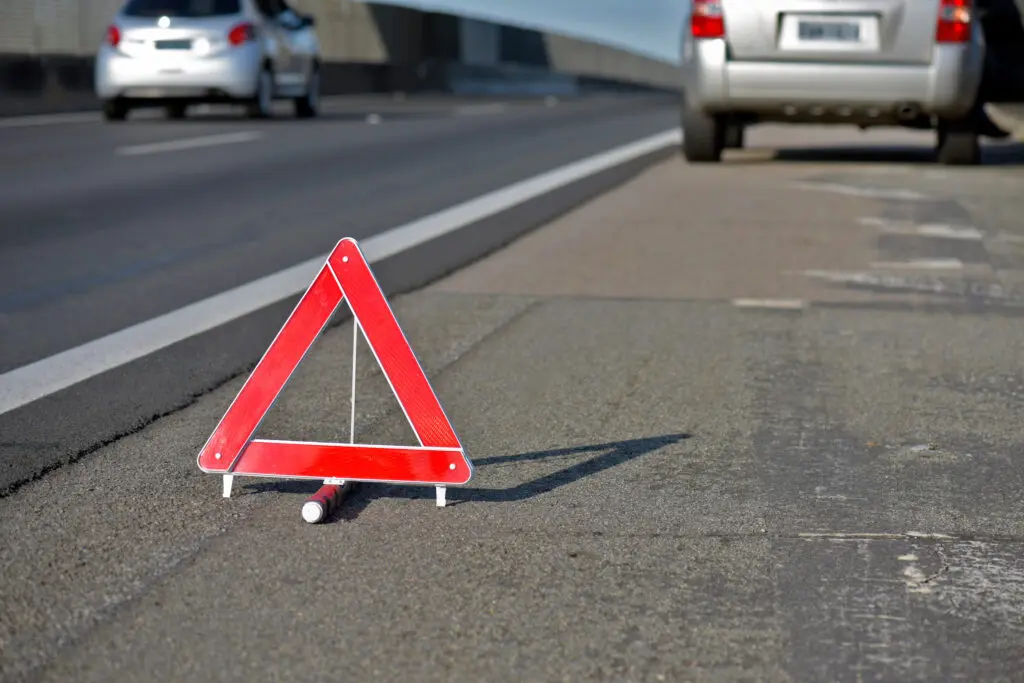
2. Put Your Hazard Lights On
Once you are in a safe location, keep your hazard lights on. This lets other vehicles know that you’re experiencing an emergency and you need plenty of room. Consult your vehicle’s manual if you’re unsure how to turn your hazard lights on.
3. Apply the Parking Brake and Use Wheel Wedges
Once you are in a safe location, put your car in park and apply the parking brake. Using the parking brake will help ensure your car doesn’t roll while you are changing the tire. The parking brake may be a lever near the center console, an extra brake pedal placed off to the far left, or even a push button labeled with a circled “P.” If part of your kit, you can use wheel wedges to add extra security to prevent the vehicle from rolling during the tire change process. Place the wheel wedges in front of the front tires for a rear tire flat. For a flat front tire, place the wedges behind the rear tires.
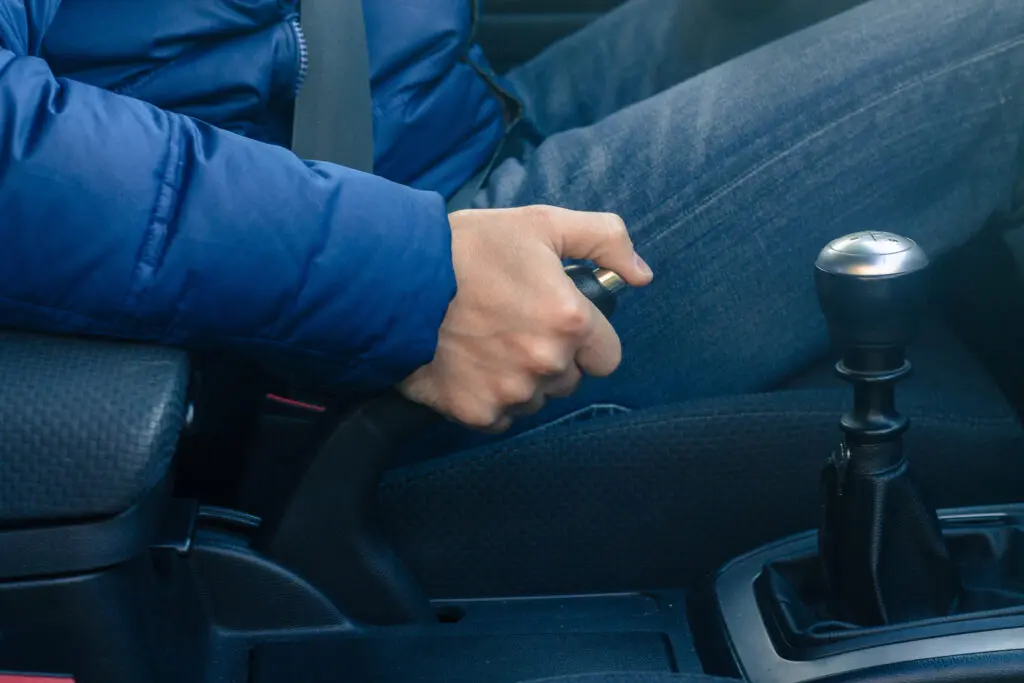
4. Loosen the Lug Bolts
Using the lug wrench included with your vehicle, loosen the lug bolts, also known as lug nuts, on your wheel, but do not remove them all the way just yet. There are typically 5 lug nuts per wheel. If your vehicle has hub caps or wheel covers, remove them before working to remove the lug bolts.
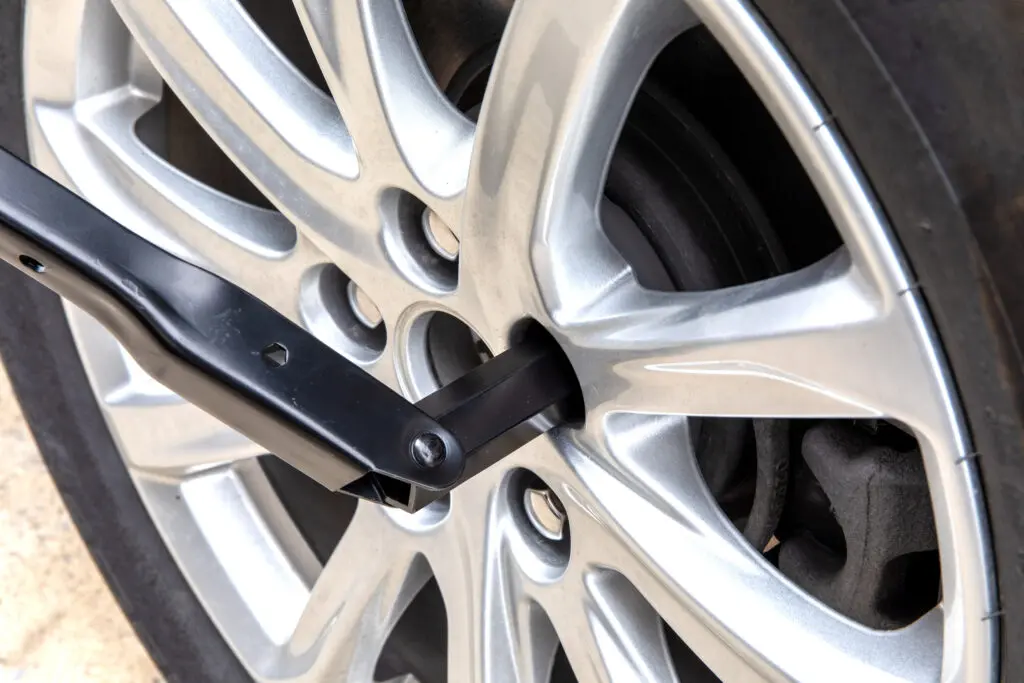
5. Raise Your Vehicle with a Jack
If your vehicle is equipped with a spare tire, it should also be equipped with a car jack (usually stored in the trunk near your spare tire) to use in the event you need to change a tire or do other maintenance work on the underside of the car. There are slight differences in jacks depending on your vehicle’s make and model, so make sure you consult your manual to understand how to safely operate your specific jack.
Once you have assembled your car jack, position it under the jack point (consult your vehicle’s manual to accurately locate this point). As you turn the handle clockwise, take your time and make sure that the jack remains stable as it lifts your car. You can stop turning the handle once your flat tire is fully off the ground.
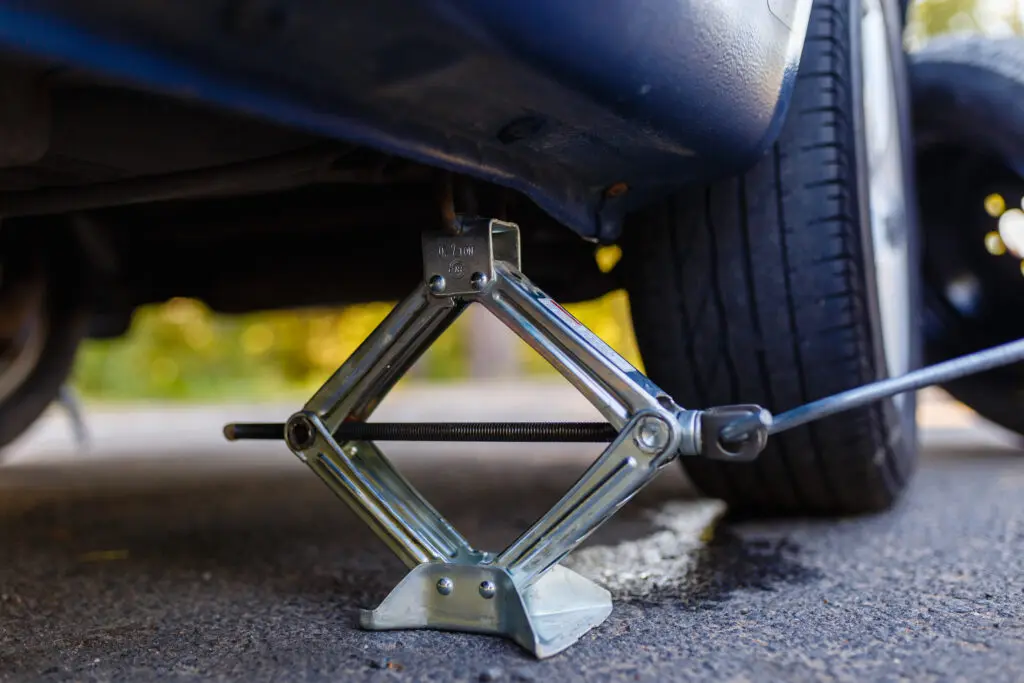
6. Remove the Lug Bolts
Now you can fully remove the lug bolts on your flat tire wheel. Keep track of them by placing them in a secure spot, like a bowl or bag nearby.
If you’re struggling to remove lug nuts due to rust or because they’re stripped, there are other removal methods you might have to try.
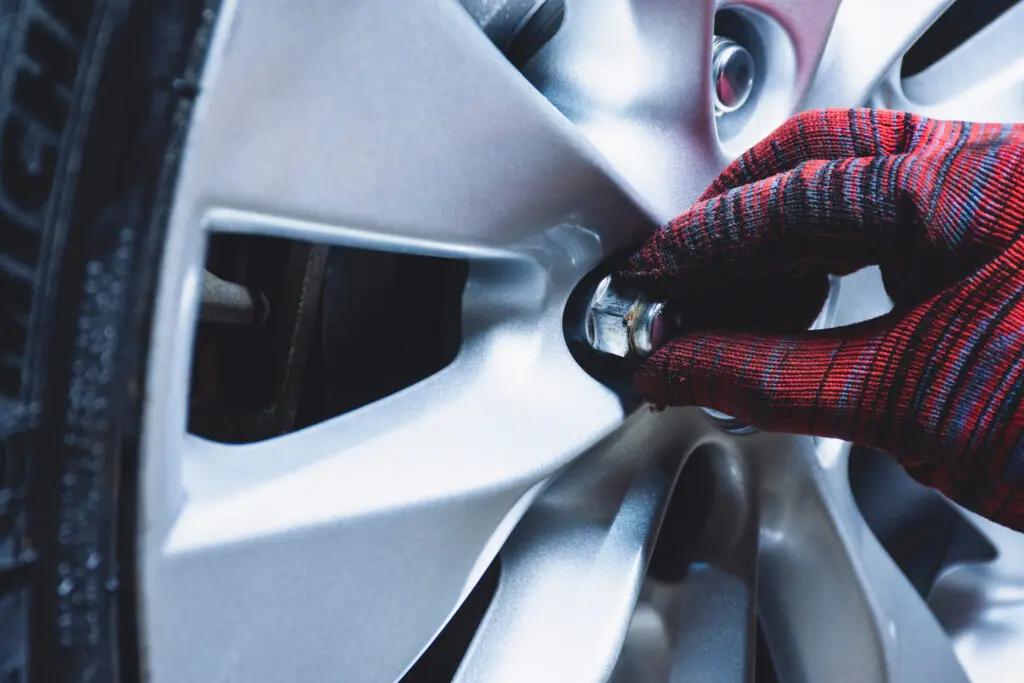
7. Remove the Flat Tire
After you’ve removed the lug nuts and placed them in a secure spot, you should be able to remove your flat tire. You might have to wiggle the tire slightly to loosen it enough to pull off your vehicle. Set the flat tire aside.
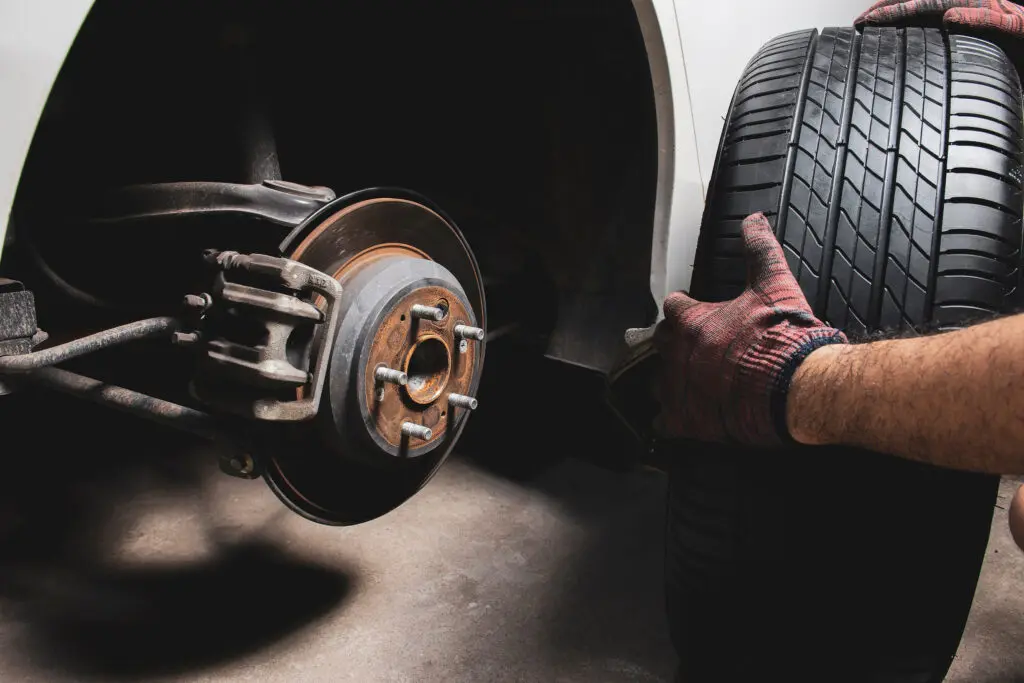
8. Mount Spare Tire on Lug Bolts
Now you can put your spare tire on your wheel. Spare tires are typically located in the trunk of your vehicle, sometimes under the cargo floor mat. Consult your vehicle’s manual to determine where your spare tire is located. Line up the holes on the spare tire with the lug bolts and push the tire as far back as it will go.
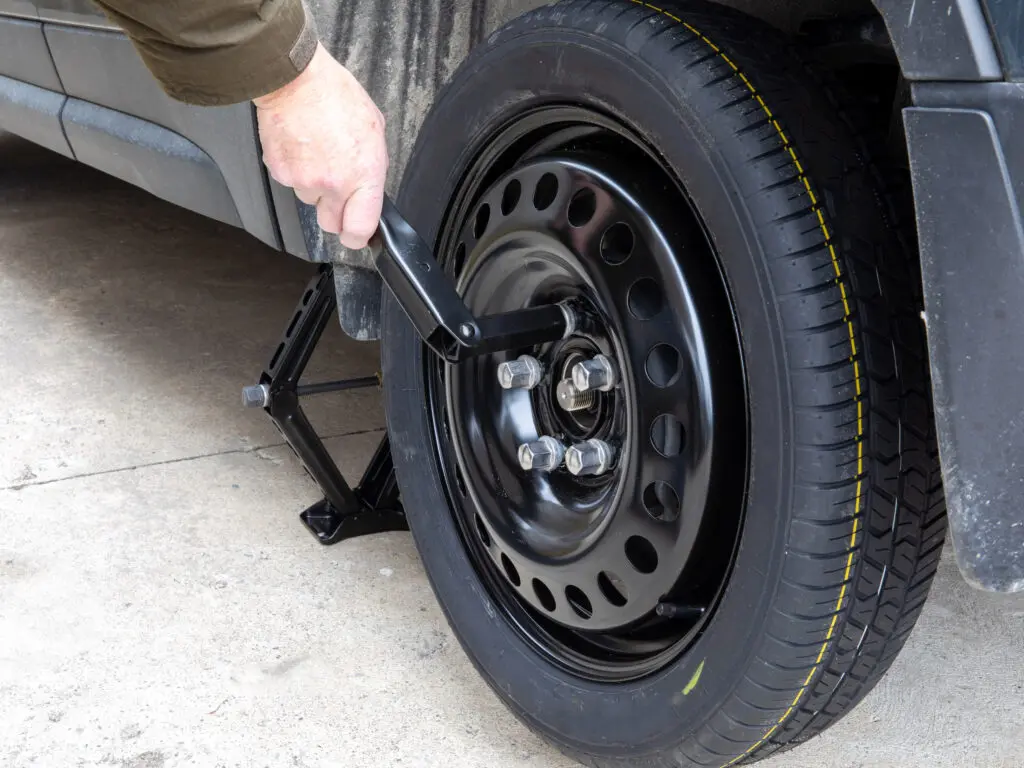
What if I Don’t Have a Spare Tire?
It is becoming more common for newer vehicles to no longer carry a spare. If you have a flat tire with no spare, there are still options!
Keeping a tire repair kit in your car to temporarily seal a puncture can save you enough time to get to a repair shop. Otherwise, calling roadside assistance is a safe option to get you back on the road or to a repair shop quickly.
9. Hand Tighten Lug Nuts Gently to Avoid Thread Stripping
To secure the tire enough to lower your vehicle, hand tighten the lug nuts. They do not have to be extremely tight.
10. Lower Vehicle with a Jack
By rotating the jack handle counterclockwise, you should see the vehicle lowering. At this stage, you do not want to lower the vehicle completely just yet. Stop lowering the vehicle once the spare tire makes contact with the ground.
11. Finish Tightening Lug Nuts Once More to Completely Secure Tire
Using the lug wrench once again, tighten the lug nuts completely, making sure the tire stays straight as you tighten. Continue tightening them in increments until they will no longer budge.
12. Lower Vehicle Completely and Remove Jack
Now you can lower the vehicle completely. Once the jack is completely released from the vehicle, pull it out from underneath the vehicle. It’s a good idea to check the tightness of the lug nuts again with the lug wrench to ensure they didn’t loosen up.
13. Store All Equipment Used and Place Flat Tire in Trunk For Recycling
Congratulations, you just changed a car tire! Make sure you put all of your equipment (lug wrench, jack, safety equipment, etc.) back into your trunk or their designated areas. It’s a good idea to load your flat tire in your trunk or your back space to take to Telle Tire for inspection.
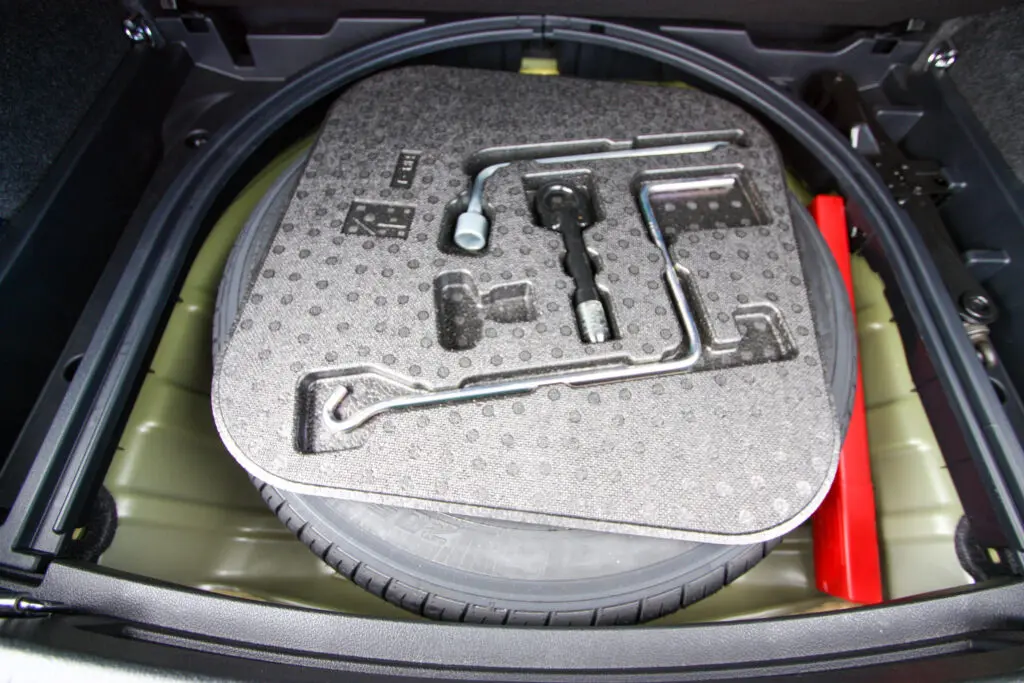
Preventing a Flat Tire or Other Tire Problems
There are steps you can take to help prevent a flat tire or tire blowout.
- Regularly check tire pressure: Check that each of your tires – including the spare – are properly inflated using a tire pressure gauge at least once a month. If you’re unsure of your vehicle’s recommended tire pressure, find a label within the edge of the driver’s side door or review your manual. Even with a pressure monitoring system, you should check the pressure because when a warning appears, it means your tires are already significantly underinflated. You should only check the pressure when your car has been stationary for a few hours as the pressure can fluctuate when the tires are warm. Additionally, ensure your tires are not overinflated. Overinflation can result in less traction and puts you at greater risk of experiencing a blowout.
- Routinely rotate the tires: Regularly rotating your tires helps avoid uneven wear patterns and prolongs the life of your tires. Your owner’s manual should have a recommended rotation schedule, which typically ranges between every 5,000 to 10,000 miles. This also provides an excellent opportunity to inspect the treads, sidewalls, and proper inflation.
- Ensure proper tire balance: In addition to tire rotation, proper wheel balancing helps prevent uneven wear and premature failure. Often confused with tire alignment, which ensures the tires are installed at the correct angles, tire balancing ensures even distribution of the tire weight.
- Avoid hazards when possible: Some hazards are unavoidable, but being mindful of where you’re driving can help you prevent a flat. If you know your route will take you near active construction zones or poorly maintained roads, try to take alternate routes. Sharp rocks, nails, glass, metal shards, and potholes can all cause punctures and flat tires. Hitting a pothole can also result in other tire, wheel, or vehicle damage. If you hit a hazard when the tires are underinflated, they may be more susceptible to damage, making it even more important to maintain tire pressure.
- Don’t overload the weight capacity: On the label within the door that lists your vehicle’s recommended pressure you will also find the vehicle’s maximum carrying weight or load capacity. Transporting too heavy of a load can end up ruining your tires, so if you must carry something a bit heavier than normal, consider increasing the pressure to the tire’s maximum allowed indicated on the tire itself.
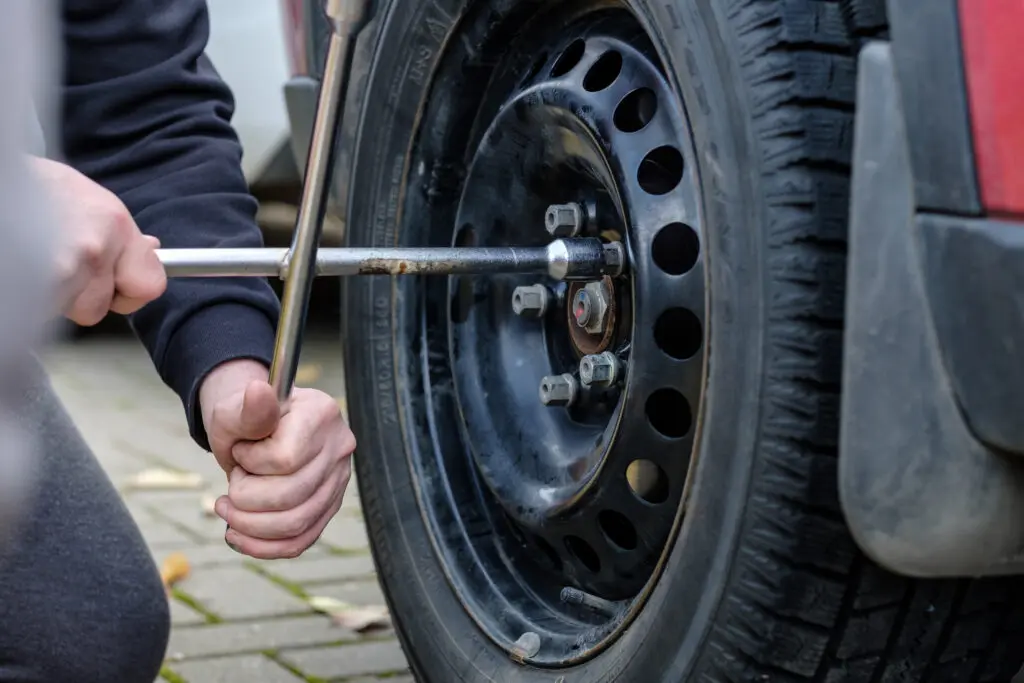
Being Prepared for Future Tire Emergencies
Despite your best efforts, it is not possible to prevent every tire problem. Although prevention isn’t guaranteed, being prepared will ensure you always have everything you need to safely get your vehicle back on the road.
What equipment do I need to keep to prepare for a flat tire?
Vehicles that are equipped with a spare tire kit will typically include the tools you need to effectively change a tire. In the event your vehicle came without, there are various items you need to make changing a tire easier.
At minimum, in order to change a tire, you need:
- A spare tire
- An impact wrench
- A lug wrench or deep socket wrench that fits your wheel’s lug nuts and bolts
- A portable carjack (ideal options include a scissor jack, bottle jack, or bumper jack)
Some additional necessary tools will depend on your vehicle’s make, model and year. These items may include:
- A wheel lock
- Extension bars
- Alignment studs
On top of the necessary items, some tools offer convenience when getting the job done. To make the tire-changing process easier and safer, you may also want to consider keeping these items in your vehicle:
- A flashlight
- Gloves or hand wipes
- Rain poncho
- Tire pressure gauge
- Tire blocks
- Road flares or reflective triangles
What kind of spare tire do I need for my vehicle?
When it comes to spare tires, not all are created equal. If your vehicle came without a spare and you’re looking to equip your car with one, there are two main types to choose from.
- Full-size spare: These spare tires are the exact same size as the other tires on your vehicle. A matching spare is completely identical to the other tires currently being used on your vehicle. A non-matching spare will have a lighter-weight construction with shallower tread depth to reduce vehicle weight and improve fuel economy. A full-size spare is typically rare in passenger vehicles, but is likely found in trucks or larger SUVs.
- Temporary spare: Temporary spares, also known as “donuts,” offer the best balancec between size and usability. Because they are smaller than the other tires on the vehicle, they take up less storage space and are light enough for most people to handle when changing a flat. However, because these are unequal in size to your regular tires, they are only meant to be driven a short distance and at speeds no faster than 55 mph. Temporary spares are great for getting you back on the road to safely get to your nearest tire shop.
Tire Repair or Replacement: What to Do After a Flat
Once you’ve replaced your tire with the spare, it’s important to think of your next step because driving on a donut is not supposed to be a long-term solution. In some cases, it is possible to repair a flat tire, saving money over a full replacement. However, repairs can only be done in specific circumstances, such as:
- Where the tire punction is located on the tire: Punctures located within the tread area may be repaired or sealed. If a puncture is in the sidewall or shoulder of the tire, it will most likely require replacement.
- The size of the puncture: Punctures that measure ¼” or smaller in diameter, repairs can most likely be done. Those that are longer, larger, or irregularly shaped can usually not be repaired.
- Amount of interior damage: If the tire has had pressure issues for some time, it can wear down the sidewall’s inner lining much quicker, causing hidden damage. Determining whether this kind of damage is present requires professional inspection.
- Overall tire condition: Despite puncture size or location, certain tire issues will warrant a replacement regardless of whether or not they can be repaired. Tires that show excessive wear or have thin tread, dry rot, tears and rips, tread separation, or damage to the bead of the tire will require a replacement.
If you require a replacement, or have experienced a flat soon after you got new tires, check to see whether the manufacturer offers a warranty that would provide repair or replacement coverage in the event or premature wear or replacement. Some brands we carry at Telle Tire that offer warranties include:
- Bridgestone Tires
- Continental Tires
- Michelin Tires
- General Tires
- Kumho Tires
Be sure to consult with your technician to determine the best option for your vehicle and what warranty coverage may be included, both from the manufacturer and the shop.
Conclusion
With this guide, we hope you feel more confident on the road. In the event you do have a flat, put on your spare and drive over to Telle Tire so that we can fix you right up with our flat tire repair services or new tire installation.
Find your nearest Telle Tire shops in Kansas City, St. Louis, Springfield, and Jefferson City, Missouri today!
